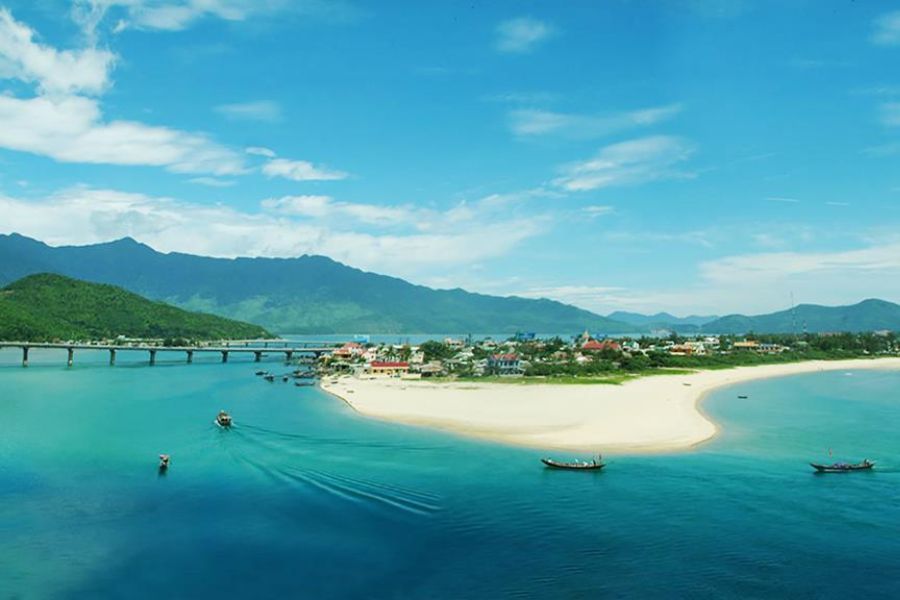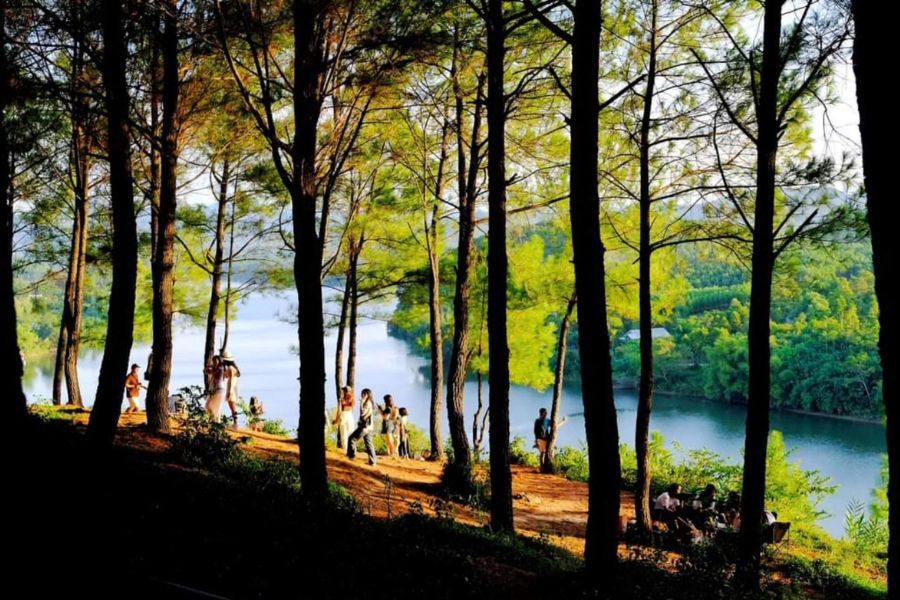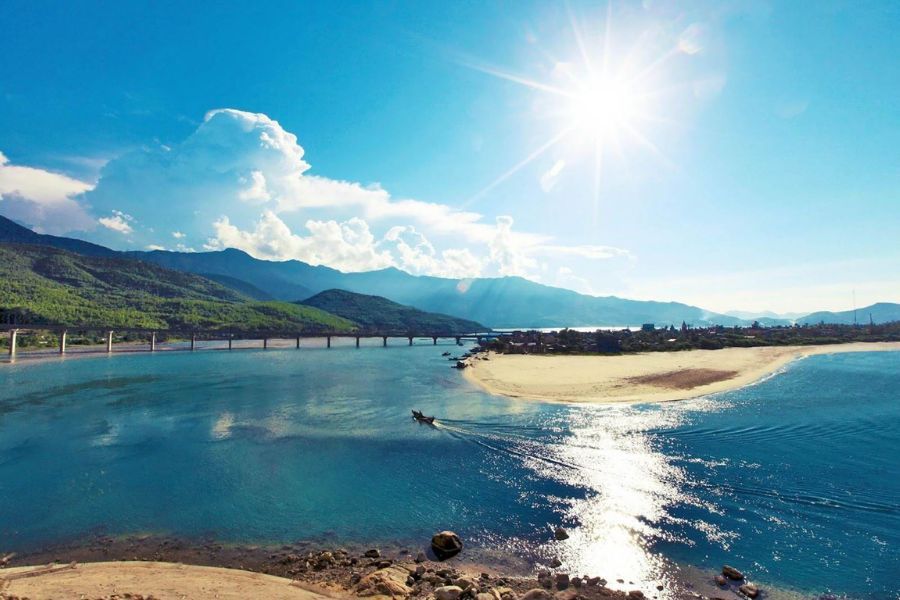Explore Dong Ba Market Like A Local: A Hue Cultural Hotspot
Located by the Perfume River, Dong Ba Market stands as Hue’s oldest and most known market. It’s full of colors, tastes, and stories. Going there lets you really get into Vietnam’s old way of life, food, and local feel.
Table of Contents
ToggleIntroduction To Dong Ba Market
Dong Ba Market is one of the most vibrant and culturally significant landmarks in Hue. More than a spot to buy and sell, it feels like an active space that holds history, where each seller has a tale. The smell of hot street food joins with the deep smell of new spices, leading you through tight paths that show bright clothes, handmade gifts, and the loud talk of sellers.
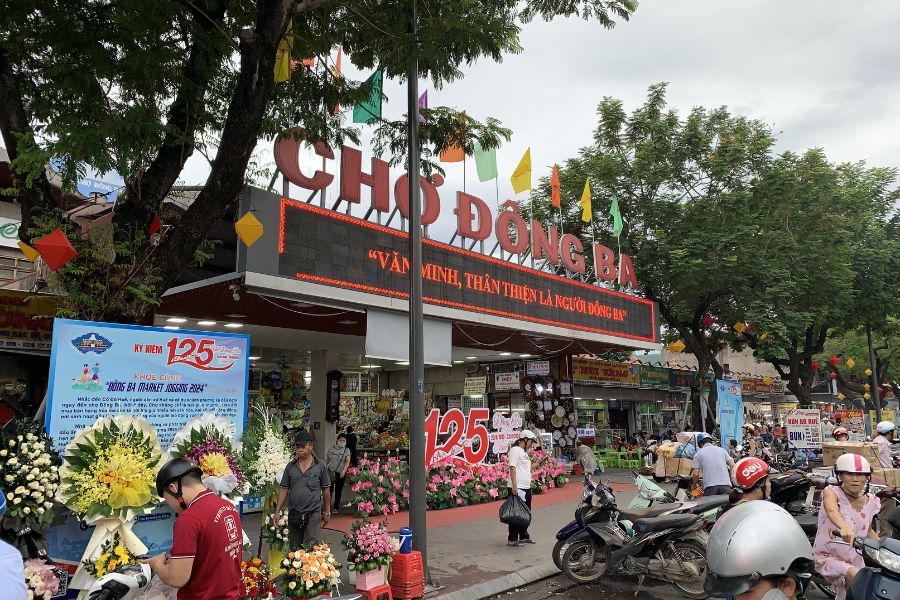
Every day, it draws lots of people, from locals getting what they need for the day to tourists searching for unique gifts and a real Vietnam touch. The calls of sellers, the scent of herbs and spices, and the bright shades of strange fruits come together, making a busy vibe that shows what a Vietnamese market is truly like. Dong Ba Market serves as a cultural link from the past to now. Here, old-time sellers with hand-made hats sit next to new stores with the latest stuff. This cool blend shows how Vietnam has grown over time.
History Of Dong Ba Market
The history of Dong Ba Market goes back to when the French were in charge, and they began to change how cities in Vietnam looked. It started in the late 1800s to meet the needs of Hue’s growing number of people. At that time, Hue was the main city under the Nguyen rulers. Set by the Perfume River, the market soon turned into a key spot for trade, making it easy to move goods by river.
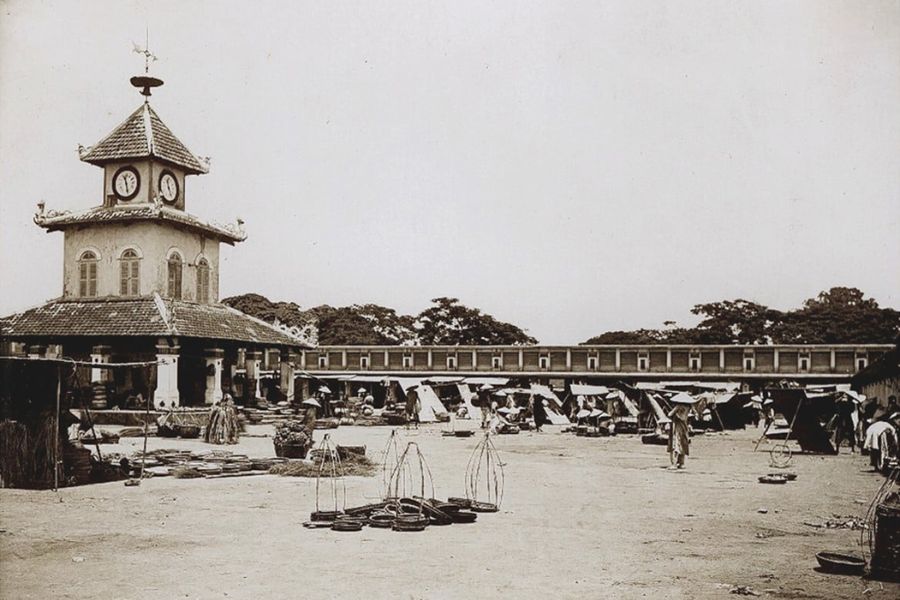
Over the years, Dong Ba Market has seen a lot of big events. It kept going through the Vietnam War, giving out food and items even when times were hard. This showed the strong spirit of the sellers and the people there. In the 1990s, big fix-ups made it more up-to-date but kept its old look and feel. This kept the market’s own style for both people from there and those visiting.
The Architecture Of Dong Ba Market
At the center of the market is a large building with three levels, known as the bell floor. It’s surrounded by rows of houses forming a U-shape. This layout blends French architectural style with Vietnamese trading practices.
Ground Floor
From dawn to dusk, the ground floor buzzes with activity. People come here to pick up fresh essentials for daily use. You’ll see a variety of stalls with sellers offering everything from tropical fruits to fish straight from the Perfume River. Early in the morning, this space fills with vibrant colors and scents as local women and cafe owners shop for the finest ingredients to prepare their meals.
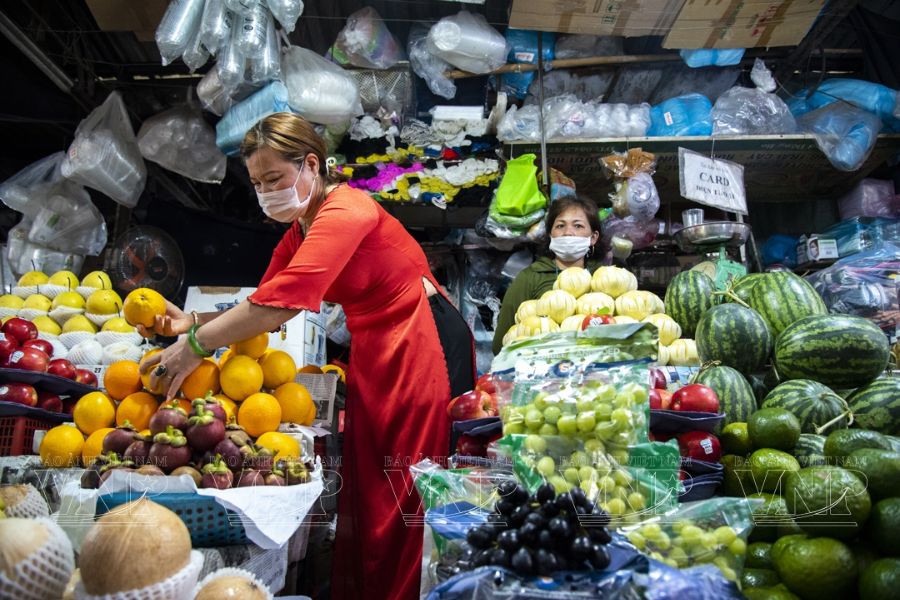
Vegetable vendors arrange their produce in colorful displays mimicking a rainbow, using carrots, herbs, and leafy greens. The seafood section boasts a wide range of fish, from river varieties to ocean catches. Meanwhile, tucked in the corners are stalls where traditional healers sell ancient remedies made from plants and roots well-known over the centuries.
Second Floor
Small shops fill the gaps between food spots, all selling classic gifts. Non La (cone hats) dangle gently from above, speaking of life in the fields under the sun. Bamboo works, sticks with earthy smells, and fabric with fine stitches show the quiet art that makes Hue’s history shine.
Many who sell here like to share stories behind their work. Ask about the designs sewn in, how bamboo fits into everyday life, or how the sesame sweet gets its shine. What you bring back from here isn’t just a thing, it’s a memory filled with meaning.
Third Floor
As you go up to the third floor, you land in a big mix of fabrics, clothes, and things to wear that show off Hue’s rich culture. This spot is a dream for those who love style, with stands full of all sorts, from daily wear to fancy, old outfits like the fine Ao Dai. If you’re after light scarves, sewn bags, or cool hats, there’s a lot of choice, and it’s all full of color.
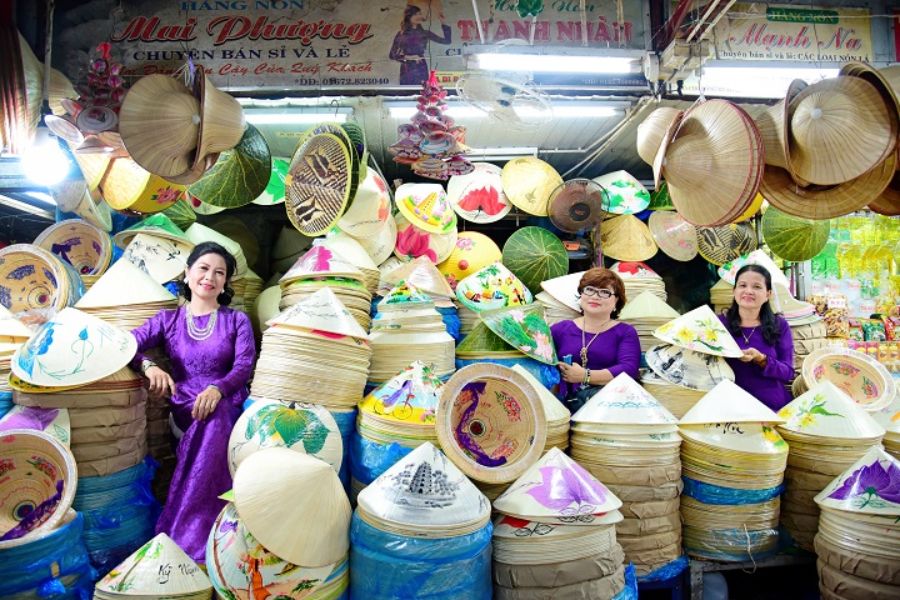
What makes this spot stand out are the good tailors who make Ao Dai just for you, a key mark of Vietnamese beauty and being a woman. Many folks pick from fine silk, heavy cloth, or soft cotton and get sized up right there. The process is close and feels good, giving you a rare look at old sewing ways that have been around for ages. For those into style or items full of culture, getting an outfit here is a way to grab the spirit of Hue.
4 Cultural Experiences You Shouldn’t Miss
On top of food and shops, Dong Ba Market lets you dive deep into Hue’s culture. Here are five big things you can do to feel the heart and true vibe of the town.
Try Local Food At The Food Court
One of the best ways to know Dong Ba Market is through its street food. These foods show the true taste of Hue’s cuisine. They are loved not just by people from here but also by visitors from all over who look for real tastes. You should try:
- Bun Bo Hue (Hue beef noodle soup): A hot and rich beef noodle soup, seen as the heart of Hue food. It has a tasty broth made slow with lemongrass, chili oil, and shrimp paste aged to taste, with soft beef, pork hock, and big round noodles.
- Banh Beo (Steamed rice cakes): Soft and tasty, on top are shrimp, crispy pork, and green onion oil, with sweet fish dip – a light and yummy bite.
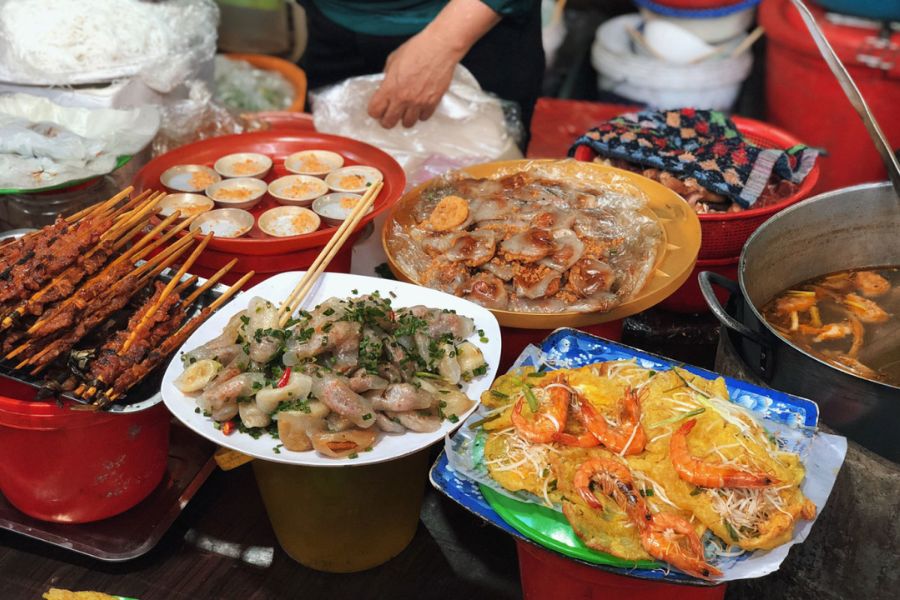
- Banh Am (Flat rice dumplings): Packed in green banana skin, full of shrimp and pork – soft, full of smell, and melts as you eat.
- Banh Loc (Tapioca dumplings): Clear and chewy, with shrimp and pork belly-loved in Hue for its fun feel and strong taste.
- Che Hue (Hue sweet soups): A bright mix of treats with beans, fruits, jellies, and coconut milk – best when cold on a warm day.
- Nem Lui (Grilled pork skewers): With fresh herbs, rice skin, and sauce to dip – great for making your wraps with a deep smoked taste.
Explore Old Craft Skills
Many sellers at Dong Ba Market are also skilled crafters who create their items using old techniques passed down by their families. Visitors can watch hat makers weave palm leaves into the well-known Non La, or observe silk weavers making intricate patterns on ancient looms.
These displays offer people a close view of the detailed work that defines Vietnamese crafts. Lots of crafters are happy to talk about their methods and share stories about their work, helping visitors appreciate the skill and time it takes to craft these beautiful items.
Learn How To Bargain In A Traditional Market
Visiting the Dong Ba Market is a good way to learn the old Vietnamese style of bargaining. This type of dealing is not just about talking prices. It’s a way to bond with both buyers and sellers. Sellers search for buyers who like to bargain, and often, they talk and show respect to each other.
Start by setting a price that is about half or a little more than their initial price, then gradually increase to a price both agree on. Remember, always bargain with a smile and be kind, as being too tough may be seen as rude in Vietnam’s culture.
Visit The Imperial Citadel Nearby
A few minutes’ walk or drive from Dong Ba Market is the UNESCO World Heritage Imperial Citadel of Hue. It was the center of the Nguyen Dynasty’s reign and culture, including moats, walls, palaces, and temples. Once you survive the hectic, chaotic atmosphere of Dong Ba’s laden stalls and street vendors, entering the muted, aged sector of the Citadel is a stark contrast.
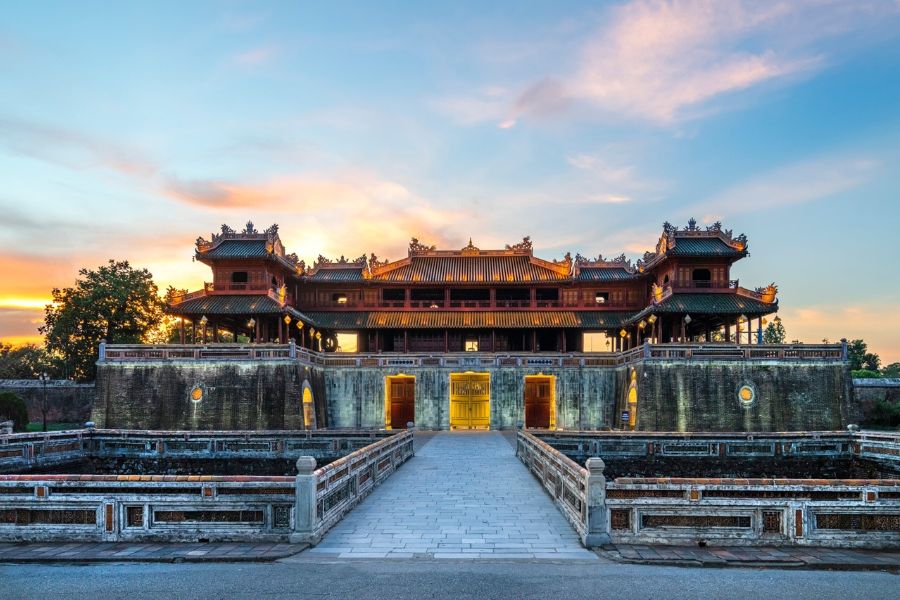
There, you can saunter through grand entrances, admire historic architecture, and ponder the town’s regal history. It’s not simply an eye candy bonanza, but a genuine immersion into the history of Hue’s kings.
Entrance Fee
Dong Ba Market is a free public market that everyone can enter. It stands out from many spots in Vietnam because it does not ask for money to go in. You can walk through its three floors and around the place with no cost.
However, you may incur costs for buying things, eating, and paying for extras like tours or unique local acts that some sellers might show. With no fees to get in, Dong Ba Market is open to all, whether you are saving money or spending big.
Opening Hours
Dong Ba Market is open every day from 7 AM to 7 PM, keeping the same hours all week. But the hardest-working sellers, mainly those who run food stalls, start to show up from 4 AM to 5 AM.
The market is most crowded in the early hours of the morning, but if you go after 3 PM, it’s calmer, and it’s cooler too. If you like fewer people around, go on a weekday; more folks come on weekends and big holidays, including both locals and visitors.
How To Get To Dong Ba Market
Dong Ba Market sits on Tran Hung Dao Street in Hue City (near Truong Tien Bridge and the Perfume River). It’s in a good spot, easy to get to by many means of travel. The market is close to big spots and travel hubs, making it simple for visitors to reach from their accommodations in Hue.
| Transportation Method | Duration from City Center | Approximate Cost | Notes |
| Walking | 5 – 10 minutes | Free | From most central hotels |
| Cyclo | 10 – 15 minutes | 50,000 – 100,000 VND | Traditional and scenic |
| Motorbike Taxi | 5 – 10 minutes | 20,000 – 40,000 VND | Fast and convenient |
| Private Car/Taxi | 5 – 15 minutes | 50,000 – 150,000 VND | Comfortable option |
| Bicycle Rental | 10 – 20 minutes | 100,000 – 200,000 VND/day | Eco-friendly choice |
Things to Know Before Traveling to Dong Ba Market
To make sure your visit to Dong Ba Market is fun and easy, it’s good to plan a bit. Here are some key tips and ideas to think about for a top-notch trip.
- Take cash in small bits: Most sellers don’t accept cards. You should have enough cash on hand to buy things and eat well.
- The market can be full at busy times. Keep your bag close and keep your stuff safe.
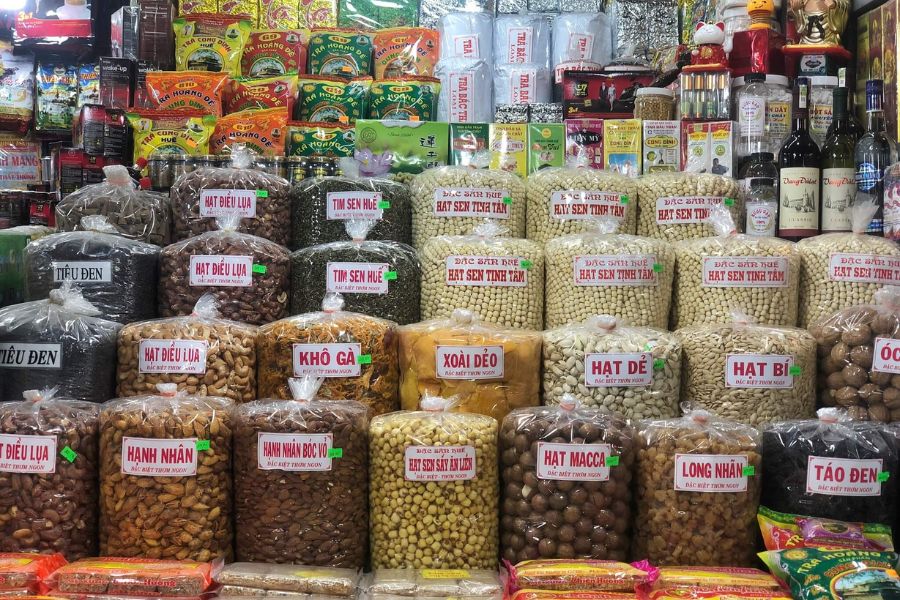
- For dry fish or strong-smelling goods, ask for air-tight packing to keep your bags fresh.
- Sellers think it’s bad luck if the first customer leaves without buying. If you go early, try to buy something, not just look.
- Take care to ask if you can snap a photo of folks, mainly when they sell stuff. Lots of them will smile and stand for a pic, but it is nice to ask them first.
- Try to pick up simple words in Vietnamese like “xin chao” (hello) and “cam on” (thank you) to get smiles and maybe even good deals.
- You should try to deal with prices, but keep it kind and warm. People in Vietnam like peace and not losing face, so if you get too pushy, you might end up paying more and not having a good time.
Final Thoughts: Is Dong Ba Market Worth Visiting?
Going to the Dong Ba Market lets you really feel what life in Vietnam is like every day. The mix of old-style buildings, usual trade, and new needs makes a place where you can see real Vietnamese ways while finding it easy to look around and buy. Let SeniWorld take you down the busy paths and secret spots of Dong Ba Market. We make sure you find not just great deals and tastes, but also the deep stories of culture that make this old market a key place to visit on your Vietnam trip.









